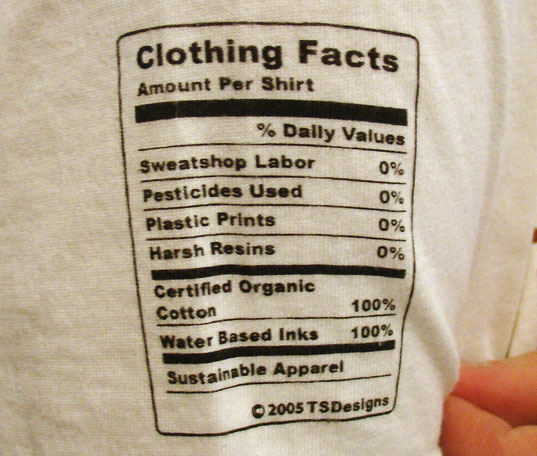
in 1994 the US food and drug administration mandated that all food sold in the US contain a table of ‘nutrition facts‘. the label (above) quickly became a graphic icon, and soothed an obese population with a sense of control over diet through proper labeling. as a result the graphic convention was rapidly and widely adopted as a signifier for truth in design, and it is used today to adorn a number of non-nutritional products with information about their origins or contents. for example, inhabitat makes this t-shirt touting its ethical manufacture:

the fda has made the template for its nutritional guideline available here in .eps form and a number of companies make programs that find the nutritional value of common food products, such as michael silver’s custom nutrition facts. but mandated labeling doesn’t only have to concern food: in the late nineteenth century british lawmakers mandated that japanese pencils be stamped with their country of origin, because of rising concerns that these inferior products made by unethical labor were passed off as english. now it’s time for the rest of the information we care about to be mandated and printed onto products, even if they can’t make us fat.